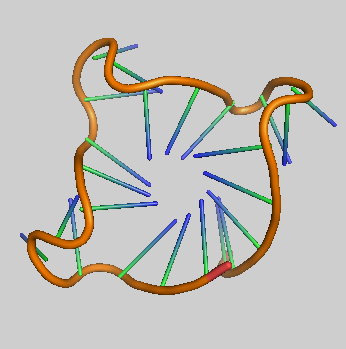
Projects
> Bacterial disease
> Calcium-binding proteins
> G-quadruplexes
> New methods
People
Collaboration
Funding
Publications
It is tricky to biochemically characterize G-quadruplexes and NMR is one of the best methods available, although the large number of NMR signals makes it difficult to verify what is in the NMR tube, particularly if a mixture is present. We applied diffusion (DOSY) NMR methods to investigate G-quadruplex diffusion properties and determine if the DNA strands were associated into a quadruplex structure, or not. This work was performed in collaboration with UK scientists with bilateral funding for exchange visits. We would like to develop new STD protocols in order to screen small molecule libraries against G-quadruplexes in order to develop new drugs and molecular tools. However, there are several technical problems that cannot be overcome until we obtain funding.
Evidence for the role of G-quadruplexes in biology is patchy and hindered by a lack of specific tools and protocols. In the future, Malgorzata wants to address this point, particularly with respect to the potential role of G-quadruplexes in neurobiology. This is an exciting, new field for which we have recently recieved funding. We expect to hire in 2012.